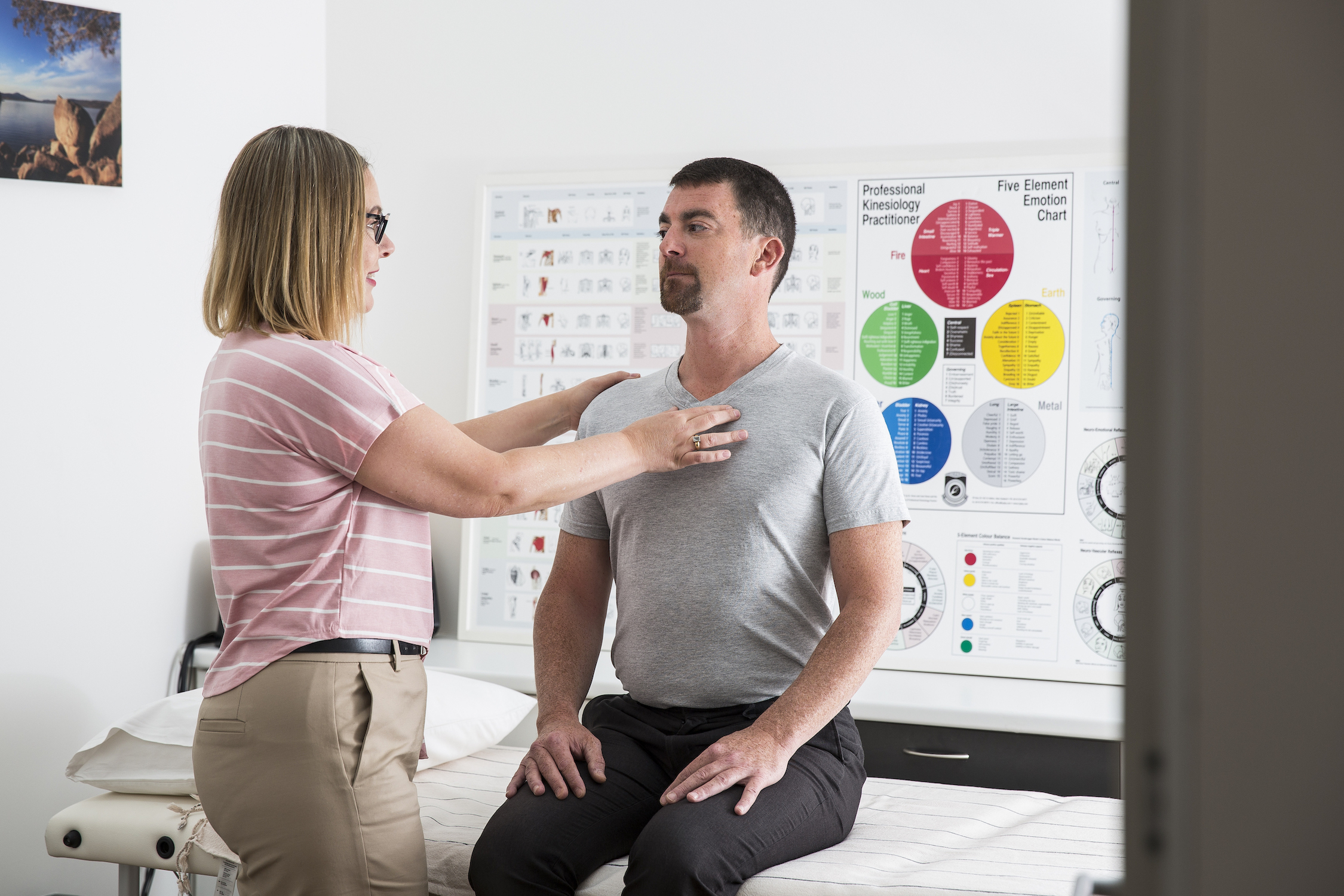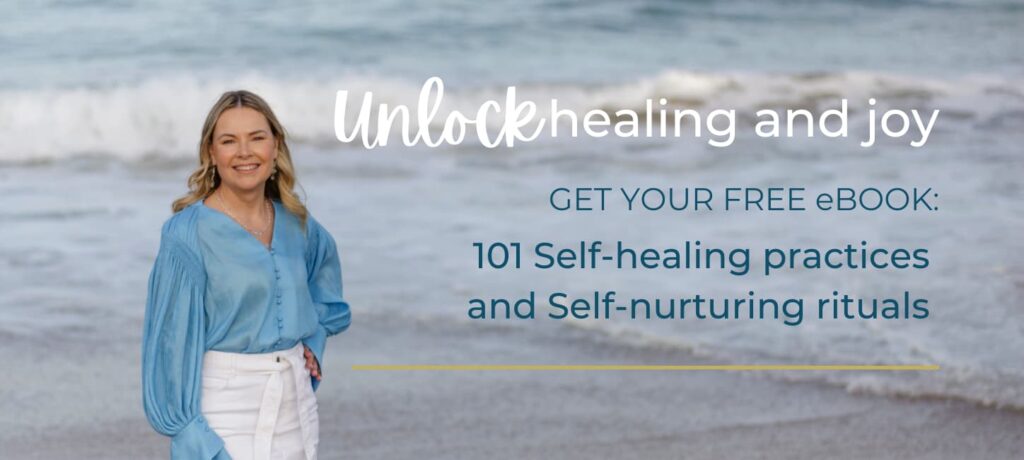More and more Kinesiologists are popping up everywhere, but all Kinesiologists are not the same. Do your research before booking with anyone.
What is Kinesiology?
Kinesiology is one of the most comprehensive natural health modalities that you’ll find. It’s one of the very few that qualifies someone to help support you with all aspects of your health and wellbeing wholistically.
Just as you might see a physio for symptoms of pain; a counsellor for your mind and emotions; a nutritionist for gut health; a reiki practitioner for energy work – a Kinesiologist looks at all this combined, and how one thing may be affecting the other. Ultimately Kinesiology may help you to find the true underlying contributing factors to your symptoms, as it’s not just looking at the symptom, but your whole body and what’s going on in your life.
Kinesiology is a combination of the science of anatomy and physiology, combined with Chinese theory and techniques, and uses the art of muscle-testing to tap into your electrical pulses to determine where the weaknesses are in your system. This combination makes for a very powerful, and insightful modality.
But don’t be deceived – not all kinesiologists out there have the same level of experience or training. More and more short weekend, and week long courses are popping up in not just Kinesiology but also other modalities.
What you want to look for, or ask is (if it’s not on a practitioners website) when looking for a practitioner to work with you:
- What form of Kinesiology do they practice?
- What level Kinesiology qualification do they have?
- Did they study through a RTO (Registered Training Organisation)?
- Are they a member of a professional association?
- Are they insured to practice?
- Do they actively do Continual Learning in Kinesiology year on year?
- How many years have they practiced?
- Do they have experience working with anyone with your specific issue?
People can officially (my teacher also told me legally) only call themselves a Kinesiologist with a minimum Certificate IV qualification from a Registered Training Organisation (RTO)
Touch For Health ™ teaches Kinesiology principles, but doesn’t not mean the graduate can call themselves a Kinesiologist. They are officially a Touch for Health practitioner.
Please note if you think you may have a medical condition then please see your GP. Complementary therapies do not treat, diagnose or prescribe. They are not a replacement for medical treatment.
Kinesiology works to help support you to better manage your symptoms, and move you towards your goals, by shifting blocks within your energy systems, so your body is in a better place to allow flow so it may start to heal.
Consequences of working with the wrong people
When you find the right practitioner for you, you should feel/sense a change after the session. Immediately after you may feel tired, but then within the next day or two you may start to feel energetically lighter and brighter. Sometimes the change is very small but significant, such not reacting as much as you once did to a particular stress.
Working with the wrong people may contribute to you feeling like you’re depressed, weak, unable to get out of bed, or fearful. I’ve experienced this personally when the practitioner had not actually completed the whole technique. It’s like leaving a door open when there’s a storm outside. I started feeling really anxious and shaky, and had terrible nightmares about murdering people.
I have had other people come to me for help after their negative experiences with other practitioners. They described their experience like being “too much too quickly”, and their body went into shut down. It left them feeling very vulnerable and some have said they got sick.
Kinesiology uses muscle testing to ask your body what it can cope with at any given time. It shouldn’t be the practitioner making the choices, but your body revealing what’s needed and in what order.
All healing is self-healing.
Kinesiology classifications
There’s Kinesiology and Applied Kinesiology. Applied Kinesiology is what a Chiropractor trains in. In Australia a Chiropractor can choose to further develop their offering by studying Applied Kinesiology, so they can incorporate the art of muscle-testing into their chiropractic support. Plain Kinesiology I explained briefly above and works with mental and emotional, physical and structural, and biochemical and nutritional aspects to look at the picture of your life and body as a whole.
Then there’s other types:
Touch for Health TM :
This is a great entry level introduction to what Kinesiology is like. It may be taught in a weekend course at some schools. It’s a great introduction if you’re thinking about studying Kinesiology as it includes some of the basic skills and techniques. And these modules included may be account towards your Cert IV if you should to progress.
K-Power
This is similar to TFH as it covers mostly the same kinesiology exercises, but with focus on specific subject matter. There are topics such as Epigenetic Healing Cycles; Emotions, Stress Release Made Easy etc.
There are no pre-requisites, and once certified you can practice on yourself and family. In addition practitioners of other modalities can do this course to add it to their existing skill set.
Neither of these qualifies the student to call themselves a Kinesiologist.
Kinergetics
This is a painless, fast, non-invasive method of healing that works on the energy fields of the body, to effectively alleviate a wide range of health problems. As with other kinesiology, Kinergetics uses muscle biofeedback to identify areas of stress and imbalance or dysfunctional energy systems of the body.
Qualification levels:
Certificate – Short courses, and long courses can be run by all types of individuals and organisations. Some of these will be a private school, and others will be recognised by professionall associates. In order to be recognised by an Association the course material has to pass an assessment of a set criteria of requirements for eligibility.
Certificate IV
To attain this level of qualification requires 12 months training, and 20 hours of supervised clinice, and 30 hours of mentored case work before you can practice for payment with clients.
Diploma
The pre-requisite is a Cert IV and is 2 years of training, and 80 hours supervised student clinic, and 120 hours of mentored case work done externally. When the Australian Health Funds recognised natural health in their registrar and provided Health Fund Rebates, a Diploma was the minimum requirement of qualification to attain a Medical Benefits number.
Unfortunately health funds have not provided rebates for Kinesiology since April 2019. The professional associations are working hard to have it re-established.
Faculty 1,2, and 3
There are hardly any Faculty teachers around, so not so many people are trained to this level. I believe this qualifies them to actually teach Cert IV and Diploma level Kinesiology.
Post Grad/Specialisations/one-offs
Once you have a qualification there are lots of interesting courses around in fields of specialisation. I have qualifications to practice kinesiology to help with Hormones, and Psycho- Emotional Trauma, Spiritual work, and this year I’m learning how to use kinesiology to work with animals.
Different Schools – different curriculum
In Australia there are a few different types curriculum. What I was told by one of my teachers is that others were created so as not to breach copyright.
One of the originals is PKP: Professional Kinesiology Practice. This is the one I studied.
I’ve also studied specialisations with another school who created NK: Neuro-Kinesiology.
Professional Associations, and insurance
There are two professional Kinesiology associations in Australia, the Australian Institute of Kinesiologists, and the Australian Kinesiology Association. Each has different level of membership. And to be considered for Professional standard you need to complete 20 CPE points per year of study. CPE stands for Continuing Professional Education. The courses have to be recognised and approved by the Associations so of a reputable standard of content and skill set. And points do not equate to hours always, sometimes it’s less points meaning which means lots more work.
In order to get insurance you have to be registered with a Professional Association. However not all Associations require you to have CPE points. There are Associations that cover many modalities such as the IICT – International Institute of Complimentary Therapists. These types of Associations are great for people that practice multiple modalities as it saves your from joining one for each, which also saves you money and helps to streamline insurance. The IICT doesn’t require you to do further education.
I am a member of both the AIK and IICT. AIK to support the Kinesiology industry, receive relevant updates and guidance and support, and to keep my Professional status. IICT to gain insurance for all the other modalities I am qualified to practice such as Hypnotherapy, NLP, Counselling etc.
If you’d like a discount on your IICT memberships: CLICK HERE
On each website they will list courses and workshops that have been approved and are accredited. I’ll list and link some of the schools at the end of this blog if you are interested.
What next
If you’d like to work with a compassionate kinesiologist who works ethically, and authentically, who has studies and practiced for many years, who can help you on many levels, then book an appointment with me today, either in-person or on-line.
Appendix
Schools in Australia
NSW
The Australian Wellness Centre, Byron Bay
Cert IV, Diploma, and Self-help courses
Kinesiology Schools Australia, Brisbane – Registered Training Organisation
Diploma of Kinesiology – HLT52415
College of Complementary Medicine, Sydney
Diploma of Kinesiology – HLT52415
The Nidana Collective, Byron Bay
Ruth Romen, Sydney
Touch for Health
Be Your Potential Kinesiology, Gosford NSW
https://www.beyourpotential.com.au/index.php/study-kinesiology-central-coast-newcastle-australia/
NK Institute – Neuroenergetic Kinesiology – Melbourne, Murwulambah, Online, and Overseas.
Kaizen – Touch for Health
WE Institute – Touch for Health
Weinstitute.com.au
VIC
Kinesiology Connection
Diploma
https://www.kinesiology.com.au
Chi Kinesiology School – Mount Martha
WA
O’Neill Kinesiology College
QLD
College of Kinesiology, Ashgrove, QLD
https://kinesiologycollege.edu.au
AKA – list of accredited courses
https://aka.asn.au/accredited-courses/
Anne Barratt is a Specialist Kinesiologist, Energy Worker, Mentor & Coach. Empowering the health of your physical, mental, emotional, spiritual, abundance, success, and life.
To learn more about Anne, Kinesiology and the other modalities practiced at Empowering Health visit www.empoweringhealth.clinic
To book a session with Anne www.empoweringhealth.clinic/book
Sessions available Online and in person. Alternatively you can email me info@empoweringhealth.clinic
For more tips to help with your health “Like” my Facebook page www.facebook.com/empoweringhealthAU. And follow me on Instagram www.instagram.com/empowering_health
Empowering Health
Operating from The Quan Yin Healing Centre, as well as holding appointments online.
Shop 12, 150 Macquarie Road, Springwood NSW 2777


